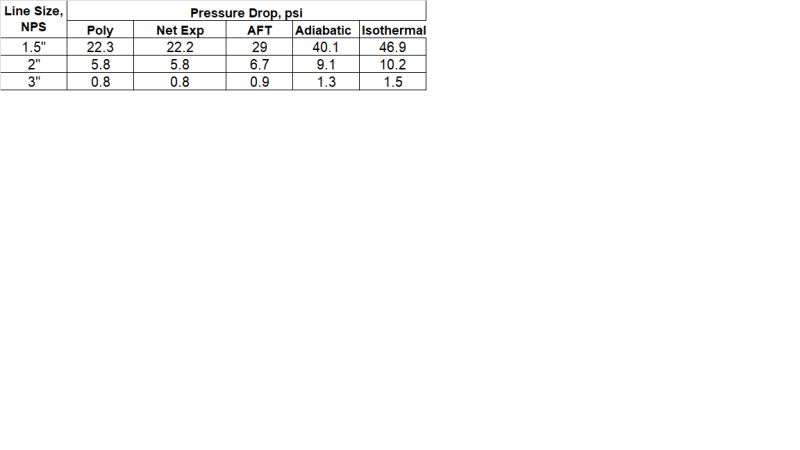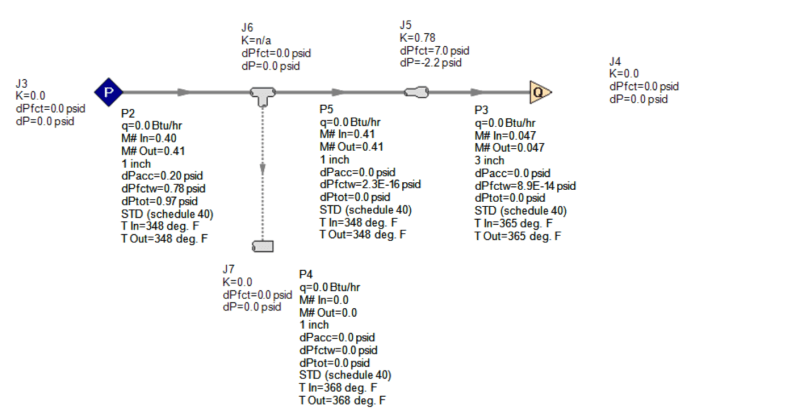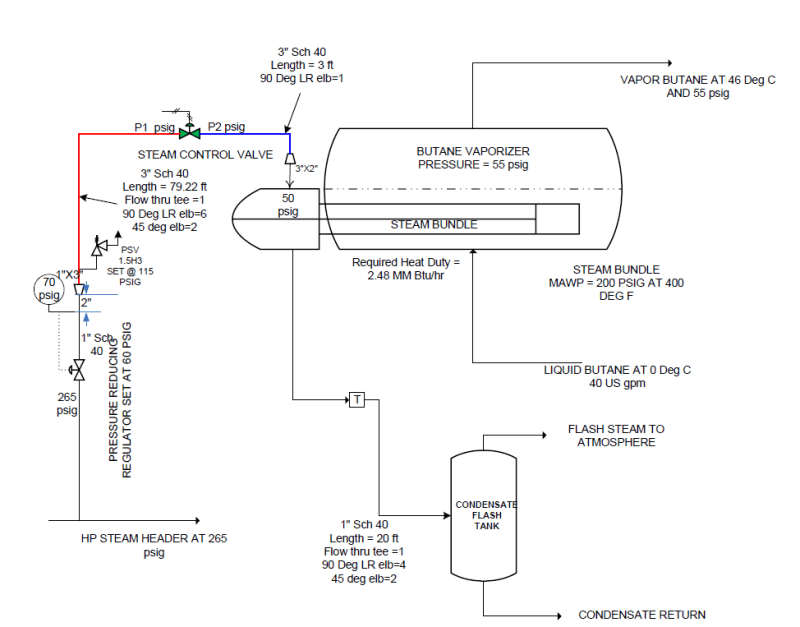Pavan Kumar
Chemical
- Aug 27, 2019
- 397
Hi All,
In continuation to this thread I wanted to discuss the following finding. I calculated the pressure drop for superheated steam using Adiabatic, Isothermal, Using Polytropic approximation of Compressible flow with friction, Darcy's equation using Net expansion factor ( using the paper by William Kirkland attached in the previous thread), and finally using AFT Arrow Software. The comparison of the results is copied below.

I have attached the spreadsheet I developed by following the paper by William Kirkland with this message for your reference.
My question is that there is vast difference in pressure drop calculated by Adiabatic, Isothermal and the Polytropic approximation. Also the values calculated using the Polytropic approximation and using the Net Expansion factor are close to the values calculates using AFT Arrow software. I am leaning towards using the polytropic approximation and wanted your suggestions and guidance on it. Also since this is steam I still have to calculate the heat loss through the pipe and insulation to calculate the steam condition namely temperature and quality at the pressure calculated using the pressure drop calculation. Is that correct?.
Thanks and Regards,
Pavan Kumar
In continuation to this thread I wanted to discuss the following finding. I calculated the pressure drop for superheated steam using Adiabatic, Isothermal, Using Polytropic approximation of Compressible flow with friction, Darcy's equation using Net expansion factor ( using the paper by William Kirkland attached in the previous thread), and finally using AFT Arrow Software. The comparison of the results is copied below.

I have attached the spreadsheet I developed by following the paper by William Kirkland with this message for your reference.
My question is that there is vast difference in pressure drop calculated by Adiabatic, Isothermal and the Polytropic approximation. Also the values calculated using the Polytropic approximation and using the Net Expansion factor are close to the values calculates using AFT Arrow software. I am leaning towards using the polytropic approximation and wanted your suggestions and guidance on it. Also since this is steam I still have to calculate the heat loss through the pipe and insulation to calculate the steam condition namely temperature and quality at the pressure calculated using the pressure drop calculation. Is that correct?.
Thanks and Regards,
Pavan Kumar


